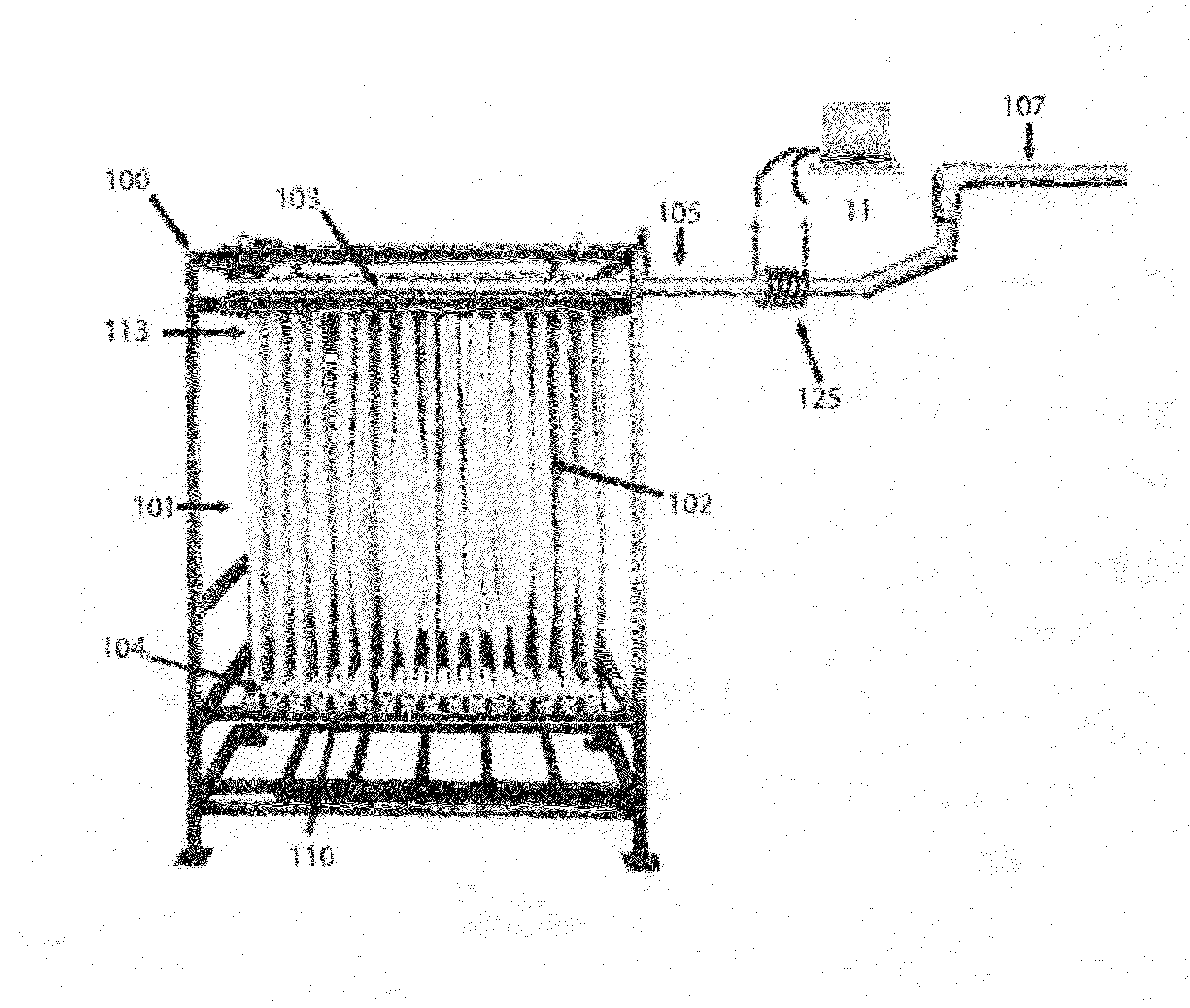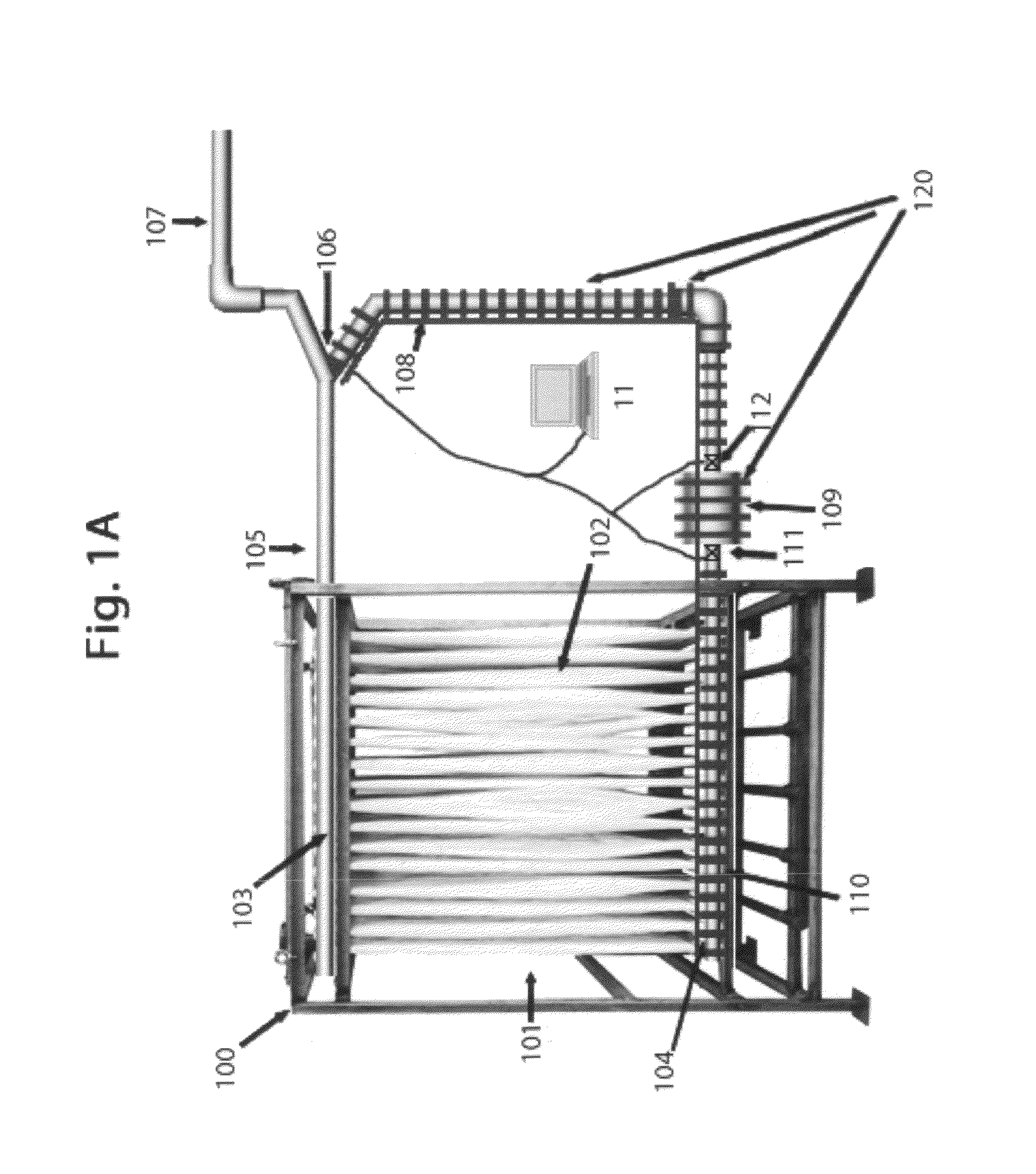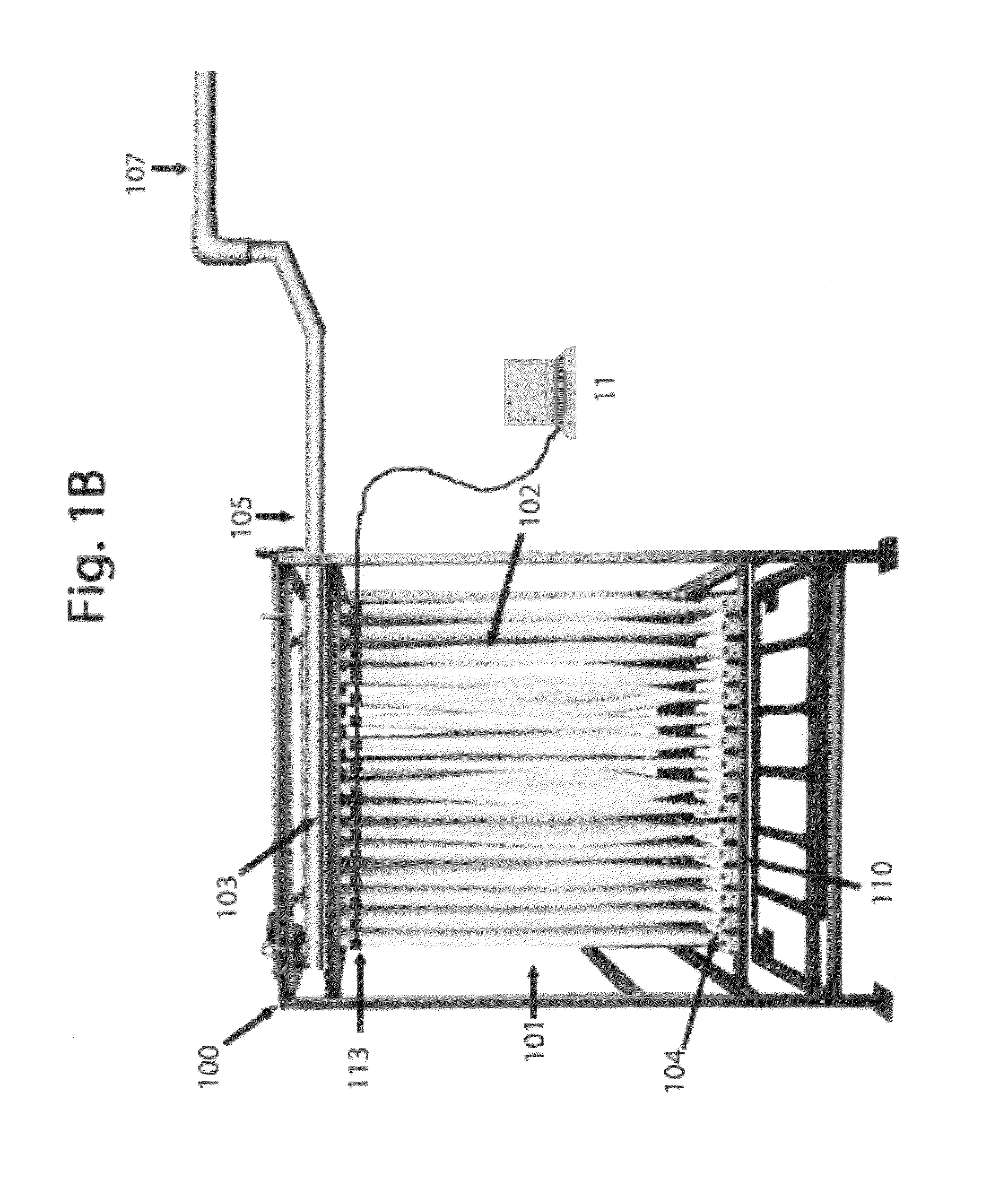Forward osmosis using magnetic nanoparticle draw solutions
a technology of magnetic nanoparticles and draw solutions, which is applied in reverse osmosis, water treatment compounds, membranes, etc., can solve the problems of inefficiency of concentration polarization and the osmotic process becoming more and more concentrated
- Summary
- Abstract
- Description
- Claims
- Application Information
AI Technical Summary
Benefits of technology
Problems solved by technology
Method used
Image
Examples
second embodiment
[0029]In a second embodiment, FIG. 1b, the use of electromagnets rigidly and electrically connected in a lattice 113, prevents the paramagnetic nanoparticles from exiting the hollow fiber membrane system. The electromagnetic lattice near the top of the membrane unit, shown in FIG. 2, is continuously energized by being connected to controller 11 to create a magnetic field with the corresponding lines of flux that point in the downward direction so as to retain the nanoparticles within the membrane unit. This prevents the nanoparticles from being forced out through the top of the hollow fiber membrane system.
[0030]Note that in FIG. 1b, recycle pipe 108 and “Y” pipe 106 (from FIG. 1a) are eliminated and collection header 105 leads directly to a collection point or end use 107. Each electromagnet is round with a round hole in its center with a membrane fiber bundle threaded through this hole. As shown in FIG. 2, every electromagnet ring is on the same electrical circuit so that each of ...
third embodiment
[0034]The third embodiment, shown in FIG. 1c, utilizes both the lattice of electromagnets to prevent the loss of nanoparticles from the membrane unit, and the separation and recycle pipe 108 for any potential nanoparticles that are lost from the membrane unit.
[0035]The fourth embodiment, shown in FIG. 1d is similar to the second embodiment shown in FIG. 1b in that it does not have draw solution recycle. However, instead of having a lattice of electromagnets or permanent magnets near the top of the osmosis unit, it has a single solenoid-type electromagnet 125 on the osmosis unit's effluent collection header 105. Again, instead of using an electromagnet, the magnetic field could be produced by a series of permanent magnets as shown in FIG. 4.
[0036]The four embodiments described above are suited only for in situ water demineralization, either desalination of seawater, or as applied to industrial cooling water, either make-up water demineralization or cooling tower side-stream demineral...
fifth embodiment
[0037]The fifth embodiment, shown in FIG. 1e, is a hollow fiber membrane system in a cartridge housing configuration 200 with superparamagnetic nanoparticles within the hollow fiber membrane strands. The hollow fiber membrane tubes 202, are potted in manifold sheets 207, such that the feed fluid enters the cartridge through port 406, and the resultant leaves the cartridge through port 405. The draw solution consists of water and ferrofluid. The water enters the cartridge through port 203 and exists through port 204. Once inside the cartridge the draw solution water enters the interior of the hollow fiber tubes where it mixes with superparamegnetic nanoparticles. These nanoparticles are kept within the hollow fiber tubes by solenoid electromagnets, 208 and 209, that are oriented such that their magnetic lines of flux are directed toward the inside of the cartridge, thus maintaining the superparamagnetic nanoparticles within the cartridge housing and on the inside of the hollow fibers...
PUM
| Property | Measurement | Unit |
|---|---|---|
| diameter | aaaaa | aaaaa |
| diameter | aaaaa | aaaaa |
| surface area | aaaaa | aaaaa |
Abstract
Description
Claims
Application Information
 Login to View More
Login to View More - R&D
- Intellectual Property
- Life Sciences
- Materials
- Tech Scout
- Unparalleled Data Quality
- Higher Quality Content
- 60% Fewer Hallucinations
Browse by: Latest US Patents, China's latest patents, Technical Efficacy Thesaurus, Application Domain, Technology Topic, Popular Technical Reports.
© 2025 PatSnap. All rights reserved.Legal|Privacy policy|Modern Slavery Act Transparency Statement|Sitemap|About US| Contact US: help@patsnap.com



